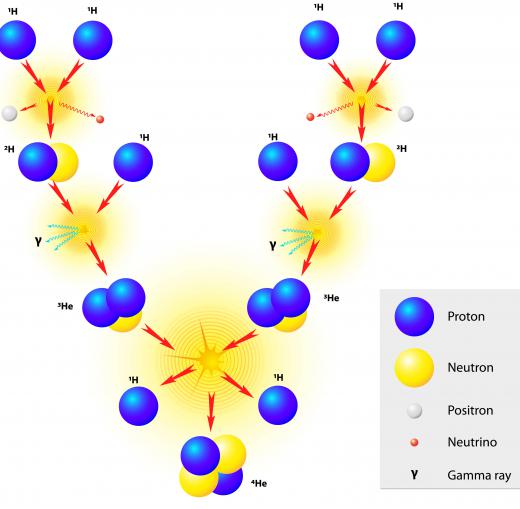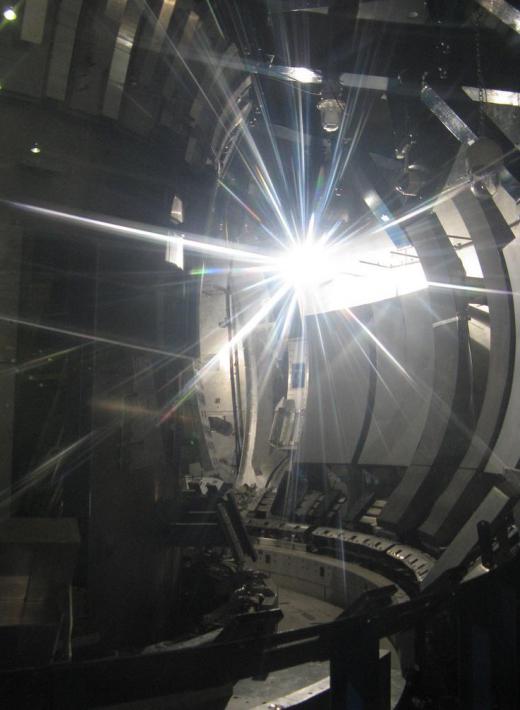What is Nuclear Fusion?
Nuclear fusion is the process by which multiple atoms having the same charge join together in order to form a heavier nucleus. In some cases, depending on the mass, energy can be released or absorbed during this process. It is a very important energy source.
Although it's often confused with nuclear fission, likely because of the similar name and — sometimes — similar results, nuclear fusion is a very different process. Nuclear fission involves splitting the nucleus of an atom, which normally has the effect of generating a large release of energy, such as is seen in nuclear bombs. This is also how most nuclear power plants generate energy.

Nuclear fusion as a source of manmade energy is still largely in the developmental stage, though some fusion power plants are online. Most of the energy produced this way that benefits humans and other life forms comes from the sun. Fusion is the process by which all stars generate energy.
The problem with generating nuclear fusion lies in getting two atoms having the same charge close to each other because these atoms generally repel each other rather than moving together. Once brought together, however, nuclear force begins to take over. This force will attract the nuclei of two or more atoms toward each other and start the fusion process, but this happens only if they are in close enough proximity.

To get the nuclei close enough together to fuse requires finding some way to get the atoms together. In most cases, this is accomplished with very high levels of heat. Heat causes the atoms to speed up, allowing them to overcome their electromagnetic tendencies to repel each other. Though this can require a great deal of energy in the beginning, the energy that results is often much greater than what is initially put in. In some cases, the heat from the explosion can create ongoing nuclear fusion reactions, called self-sustaining reactions. Stars are a good example of this.
AS FEATURED ON:
AS FEATURED ON:















Discussion Comments
I'm in chemistry honors and I have to do a nuclear fusion project. What are some good ideas?
I have the same question as timenoch. How is it possible?
When hydrogen atoms fuse together, where does the energy actually come from? Also, where are the fusion power plants and why isn't electricity cheap yet?
They can. But it's a matter of probability and I doubt that this reaction has a very high probability. For example, I am looking for the energy required to fuse two lithium atoms. I really hope it can be achieved easily.
Thanks, Ken Black and wiseGeek, for sharing knowledge with the world, and in nice simple terms that even an Arts graduate can understand. Best wishes from a far corner of the world. Denis
What is main use of nuclear fusion and fission?
i need help with my case study so can someone tell me whether they are lying or not?
it doesn't...the hydrogen atoms fuse with other hydrogen atoms to create helium, maybe that's what you mean.
In the dense core of the sun, how is it possible for the hydrogen atom to fuse only with helium atoms and not with another hydrogen atom instead?
Post your comments